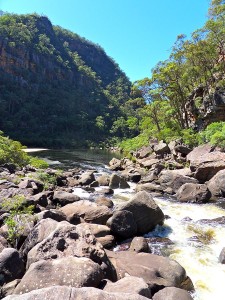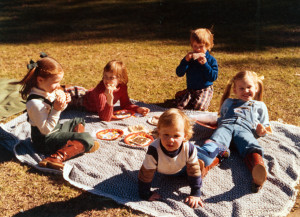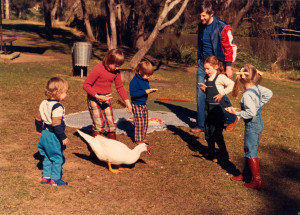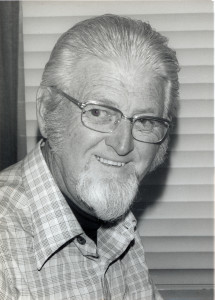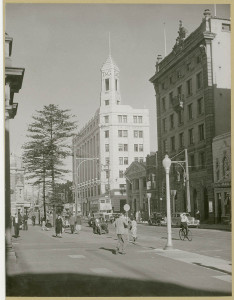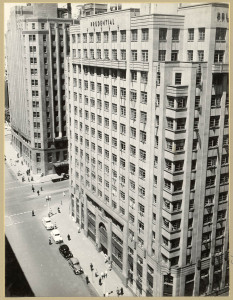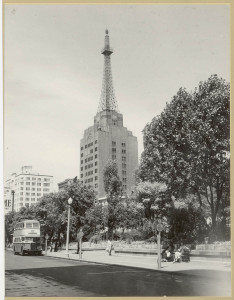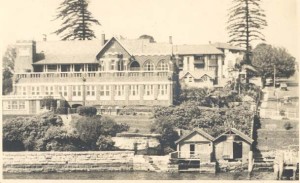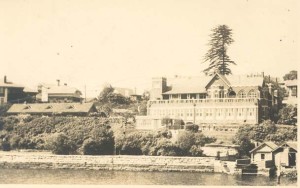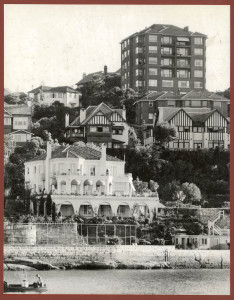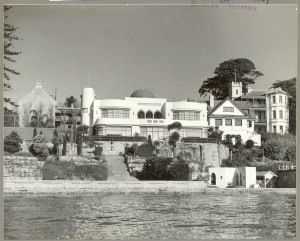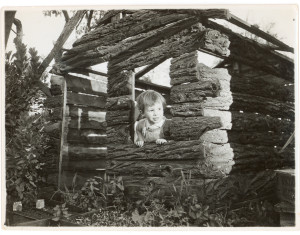It has been some time since I last did a blog post and I have decided that I really need to get back into it. So I am going to use this blog to organise some of my research so that I can start to develop my stories further.
I was listening to a podcast the other day about Trove Tuesday, the resource at the Australian National Library that gives us access to so many wonderful newspapers online. It is one of my favourite resources but I had stopped doing any genealogy over the last year as other things took priority. But now I hope I am back.
So Edwin Gransden.
Edwin Gransden has been the most exciting person to research but also one that I still have so many questions about. A time line of the things that I have for Edwin;
His birth is 23rd November 1825 in Portsmouth England, with his Christening being the 16th of March in Alverstoke Hampshire. Even Edwins birth I didn’t realise that I had until just writing this blog. I thought I had his christening records and then wanting to put the next dot point up I realised that it contained his full birth date. Edwin has been a bit amazing about the bread crumbs he has left of his life.
Next document I have for Edwin is his sea records. He joined the merchant navy and his records give a whole heap of information including what he looked like.
Height- 5 feet 6 inches, hair- brown, complexion- florid, eyes- hazel, marks- two ink marks, left hand, first went to sea as a boy in the year 1843.
Has served in the Royal Navy 3/2 years. Ticket issued in 1847.
Not only that but this document gives him first going to sea in 1843 and saying that he was a boy. He would have been 18.
Next we have Edwin in the 1851 Census- Edwin in Hartlepool staying as a visitor in the house of Ellen Sly or Fly 33.
Arrived in Australia 12 April 1855, Age-28 On the Washington Irving, as part of the crew.Washington Irving of LONDON, ISAAC DURRANT, MASTER, BURTHEN 882 TONS FROM THE PORT OF LONDON TO SYDNEY, NEW SOUTH WALES, 14TH APRIL, 1855
In 1855, 30th of April there is a wedding certificate for Edwin, St Phillips Church Sydney. Interestingly enough on his wedding certificate there is mention of a previous wife. No mention of it later when he is married a second time. But in his death records there is mention of a wife from Brazil. There may be something in this or the person who registered his death may just not have known him very well. So this is one of the questions I would like to try and follow up. Given Edwin arrived on the 12th of April and married on the 30th of April it is worth wondering if he knew Maria before they married or if this is one of the notorious Chisholm marriages to get the five pound dowry that lots of single women were given by Caroline Chisholm that then became such a bonus for many sailors. This is something worth looking into to see if there are any records for Maria Baker.
1858 has Edwin working at Mr Parkers at Mount Franklin. Some of Mr Parkers cattle have strayed and the reward will be paid if the cattle are returned to Edwin Gransden at Mr Edward Stone Parker’s house Franklin House, Mt Franklin. There is a lot of interesting history with Mr Parker and his involvement in a very positive way with the Aboriginal people in the area. This will provide excellent background so I really want to follow this up.
Just a month later Edwin is advertising for anyone interested in going shares with him in a puddling machine. It is unclear if he is doing this on Mr Parkers behalf or on his own. A puddling machine was used to break up clay ground to obtain the gold. So it seems likely that Edwin did at least dabble in some mining.
Rebekah Elphink arrives in Australia 1861. She comes aboard the Shakamaxon which seems to be a ship composed of primarily female immigrants. This is interesting because the main female migration ships occurred in the 1830’s, Edwins eldest sister was on the second one of them and they were discontinued as being to disruptive. It was decided that ships with families were a better option than ones with mainly women.
Not only does the Shakamaxon have a huge number of females on it but it also gets trapped due to bad weather and the women are unable to get off board. So the immigration agent puts out an advertisement in the paper saying that the hiring of women from the Shakamaxon has been postponed until the women are able to disembark. Married women will be hired out at 10am and single women at 11am. Was Rebekah hired to go the Mount Franklin or was she met at the ship as a family member?
Then in 1861 Edwin marries again. There is no sign of divorce, no sign of Maria and years later, when Maria dies her marriage certificate calls her Mrs Gransden. So this may well be a case of bigamy. Certainly he seems to have left her very quickly which again makes me wonder about the Chisholm dowry. At his marriage to Rebekah Elphink at Mount Franklin House, Franklinford Mr Parker is one of the witnesses. It is also interesting that Rebekah’s mother’s maiden name was Parker and it may well be that Rebekah and Mr Parker are related in some way. Interestingly enough Rebekah’s immigration records show her arriving from England earlier that year. Life sure seems to move fast in the Gold fields.
Once again in 1861 some cattle go missing and Edwin advertises for them to be returned unlike the previous advertisement he does not mention that the cattle belong to Mr Parker and the brand is now a C in a circle rather than a B in a circle. So it is possible that these cattle belong to Edwin.
Next sign of Edwin and Rebekah is the very next year. Edwin and his brother Silas are on a ship, the Rangatira travelling from Melbourne to Sydney. Both are down as crew A.B. I have yet to find out what that means. No women are mentioned so it is possible that Rebekah is on the ship with them but not certain. I have been unable to find her anywhere else but six months later Edwin and Rebekah’s child is born in Rockhampton, so it is logical to think that she is travelling with her husband and his brother. Even more interesting, in 1866 Silas is again in Australia, in Sydney and he puts out an advertisement wanting to catch up with his brothers Robert and Edwin, last known in Bathurst. Is it possible that Edwin and Rebakah took a detour, on their way up to Rockhampton, to visit Robert Gransden and therefore also possibly Mary Russell, their elder sister?
So then we come to the birth and death of Edwin James Gransden, in early 1863. He died just three days after he was born. At this time Edwin is noted as being a Carpenter. So far he has moved from one gold field, Mt Franklin, to another, Crocodile Creek, but he is not mining, he is in support professions carpenter, plumber, post office holder and later publican.
1864 saw the birth of another son, also called Edwin James Gransden. James is Rebekah’s fathers name which is probably why it is being used.
March of 1864 Edwin purchases some land. ALLEN, William (Vendor) and GRANSDEN, Edwin (Purchaser)
1866 Silas puts a notice into the Sydney Morning Herald, trying to locate both Edwin and his brother Robert, last known location Bathurst.
November 1867 Edwin purchases some more land BELLAS, Thomas (Vendor) and GRANSDEN, Edwin (Purchaser).
There then seems to be a break in specific incidents. However by this time Edwin is running a regular advertisement in the Rockhampton Bulletin and Central Queensland Advertiser This runs every issue from the First of January 1867 to 7th of October 1869. Edwin is running the Post Office and he is advertising that he holds copies of the GOLD FIELDS’ REGULATIONS for anyone who would like a copy. I would really love to get a copy of these regulations and see what they say. So far I have not been able to locate them.
I have an article that says that there was a vote for who would hold the Post Office in 1867 and that Edwin Gransden’s store was nominated as the new Post Office, thus the advertisement of the regulations. So far I have not been able to find any information to substantiate the vote for which store became the Post Office but Edwin’s certainly held the position of Post Office while he was advertising the Gold Field Regulations.
In fact in 1868 Edwin Gransden is noted in the 1868 Crocodile Creek Post Office Directory as the Post Office Store Keeper. It is likely that the two land purchases that Edwin made in 1864 and then again in 1867 would include his house and the shop that became the Post Office.
On the 31st of January 1867 Edwin is noted as eligible to vote in the upcoming elections. To be eligible to vote Edwin must be firstly male, so Rebekah could not have voted, over 21 and he would have had to have held a miners license for at least six months. Voting was not compulsory so Edwin did not have to vote.
1867. Edwin also has the Bank of New South Wales using his store to locate their own business- BANK OF NEW SOUTH WALES FOR the convenience of the Diggers at Crocodile Creek, an agent of the above Bank will purchase Gold at the office, next to E. Gransden’s Store, every SATURDAY, from 11 am. till 9 p m.
In 1867 Edwin also sold two allotments of land. A BARGAIN! TWO ALLOTMENTS of GROUND on Athelstane Range, formerly known as Ward’s Paddock. Splendid Residence Sites. One Allotment, containing two acres of very superior land, with a good supply of water; also, One and a-half acre Allotment, corner of the block.
For particulars, inquire of E. GRANSDEN, Crocodile Creek
In 1868 Edwin wrote a very complete article on Quaertz Machinery on Queensland Reefs.
QUARTZ MACHINERY ON QUEENSLAND REEFS
To the Editor of the Australasian Sir,- Will you allow me, through the medium of your valuable paper, to state a few facts, by which owners of unoccupied crushing machines and ourselves may
be mutually benefited? In the first place we have six distinct quartz reefs, viz., the Hector reef, eleven claims working, and, about 1,600 tons now on grass; the Canadian, five claims working, and about 600 tons now oh grass; the Anglo-Saxon Reef, prospecting claim only, about sixty tons now on grass; James White, prospecting claim only, about forty tons now on grass;: William White, prospecting claim only, about seventy tons now on grass; .and the Frenchman’s Reef,
five claims now working, and about 300 tons now on grass.
Now, with all these. reefs lying within fifteen miles of Rockhampton, one would think that the inhabitants would have formed a company to erect machinery and to crush at a reasonable profit. But not so. In the month of November last, several of our reefers met a party of townsmen by appointment; to hear terms proposed for a machine, ; to crush on the first of this month, at 30s. per ton and a bonus of eight per cent; and as the majority of the men could not help themselves, they agreed to. those terms. Now, the company will, not be able to commence ; within three weeks from this date, and have thus broken their, agreement, put as an equivalent for their, bonus they are going to charge £3 per ton for crushing. Any party with a machine lying idle would do well to pay a visit to this locality. He would pronounce it a second Tarrengower, and satisfy himself that it will pay handsomely to shift his machine here; for with a reason able price for crushing it is my opinion that 500 tons of stone will be raised in this district weekly.
Hoping you will excuse the length of this letter,
I remain, yours respectfully,
E. GRANSDEN, Postmaster.
Crocodile Creek, Feb. 11
ON the 23rd of December 1868 Edwin put a notice into the newspaper that he was planning on applying for a Publican’s License for the sale of Fermented and Spirituous Liquors. The house contains 2 bed-rooms and 2 sitting-rooms, exclusive of those required for the family. The Sign
is to be “REEFERS’ HOTEL,” and which I intend to keep as an Inn or Public-house I am married, and have a wife and 2 children.
In early 1869 Edwin starts to sell some of his belongings.
TO SQUATTERS AND OTHERS GOING UP COUNTRY.
For SALE-Two Staunch Draught Horses, Two Sets of Harness and a strong Spring Cart. The horses have been working together for the last eighteen months, between town and Crocodile, in and out the same day, carrying from a ton to twenty-six hundredweight. Price-(£50) fifty pounds. A
satisfactory trial given. Enquire of E. GRANSDEN, Reefers’ Hotel, Crocodile Road.
Edwins wife Rebekah has died and given subsequent happening he is selling up possibly to move to Brisbane rather than stay in the Mine Fields. Rebekah had been sick for 10 months with consumption. It is quite possible that the initial sale of the Horses was to pay for her medical bills and possibly because Edwin was just no longer able to keep up with running his business at the level that he had prior to Rebekah becoming ill.
Despite Rebekah’s illness Edwin was still engaging in local activities. In early 1869 Patrick Halligan, the local policeman was murdered. A reward committee was set up to help with the discovery of the murders. Edwin contributed 10 pounds.
REWARD COMMITTEE.
AMOUNTS Received towards supplementing the Reward for the discovery of the Murderers of the late PATRICK HALLIGAN.
E. Gransden down as having contributed 10 pounds
The property did not sell by private sale and had to go to Auction.
Then late in 1869 Edwin Gransden is trying to sell everything.
FOR PRIVATE SALE, Those Premises lately erected at the THREE – MILE, CROCODILE ROAD,
And within 200 yards of Gannon’s Crushing Machine, and known as THE REEFERS’ HOTEL.
THIS, a FIRST-CLASS OPENING for any person with a small capital to go in the Public line, with the certainty of realising a good income. The Reefs in the district are only in their infancy yet, fresh Reefs are constantly opening ; what are at work are realising good dividends. To a carrier, this property would be highly advantageous, as there is good feed for horses all the year round, end work in carting quartz, and stores from Rockhampton.
The reason this Property is placed in the market, is in consequence of a death in the family, and the proprietor entering into other pursuits. Should this Property not be disposed of privately, it will be submitted to public competition on Tuesday, the 28th of September.
For further particulars, inquire on the premises.
FOR SALE BY PUBLIC AUCTION, THIS DAY, TUESDAY. 28TH INSTANT, UPON THE PREMISES.
Commencing at Eleven o’clock, That recently formed property, situated at the Three-Mile Creek, Crocodile Road, and favourably known as the Reefers’ Arms Hotel. The main building-40 by 16 feet, contains five rooms, with a detached kitchen and servants’ room ; also, a store-room
18 by 25 feet, together with a stable and other useful out-offices-the whole securely fenced in.
There will also be sold the whole of the FURNITURE & OTHER EFFECTS, Comprising
SITTING-ROOM, DINING-ROOM, AND BED-BOOM FURNITURE,
Vis,
Tables, sofas,’arm-chairs, side-tables, chairs, forms, lamps, desk, washstands sets, cedar
console, dressing tables, double and single iron bedsteads, &C., palliasses, dressing glasses, &c., &c. ; also, a
BAGATELLE TABLE (complete.) Microscope, repeater, duelling-pistols, guns double-barrelled, rifle, gold scales, clock, pestle and mortar, and other useful articles.
IN THE BAR:
A counter, filter, dripstone, drainer, decanters, pewters, lamp, time-keeper, glassware, steel quoits, thermometers, and various requisites, including cooking utensils, and a lot of jumpers and crow bars, and an assortment of Fowls, ducks, coop and chickens, &c., &c, &c.
And lastly
A lot of General Store Goods. M. WORMALD is favoured with instructions from Mr. E. Gransden, to sell by auction on THIS DAY (TUESDAY), 28th instant, commencing at ll o’clock All those Buildings situate at the Three-mile Creek, Crocodile Road, end well-known as the REEFERS’ ARMS HOTEL. Together with the Furniture and Effects as described above, including
Bagatelle Table Store Goods Poultry, &c, All for positive Sale to the Highest Bidder. Terms at Sale.
N.B. The position of this property is a very central one, and certainly well situate for an
Hotel, which under the management of an enterprising men would be sure to receive a large
amount of support, not only from the daily traffic on the road, but also from those engaged
in working the several reefs in its vicinity. As those reefs have given undoubted proof of their
richness, and as their working is as yet merely in its early stage, it is only fair to anticipate that
with their development, a proportionate share of the benefits will be derivable by the possessor of
this House, for remunerative returns are now received from the business. A four-horse coach will leave the Auctioneers’ office at half-past 9 a.m., conducting intending purchasers to and fro, free of charge. Luncheon will be provided.
Then on the 18th of May 1870, Edwin himself died.
Edwin and Rebekah left two children. Ellen Gransden 4 years old and Edwin James Gransden 7 years old. Both children were placed in the Diamantina Orphanage. Ellen died three years later at the age of seven. She had died at school and was noted down as dyeing due to atrophy. At the orphanage boys and girls were in separate dormitories and I have yet to discover if the sister and brother would have been likely to come in contact at all. Regardless Edwin was adopted only a year after he entered the orphanage where as Ellen was never adopted so it is likely that if they did see each other if was on rare occasions once their parents died.
Edwin James was adopted by William and Martha Dockrill in 1873. He worked as an overseer on their property (Tartha) for some years. He met Catherine Wright and they married in 1893.
GRANSDEN—WRIGHT.—On the 4th April, at Brighton-Road-Congregational Church, by the Rev. William Bradley, Edwin James Gransden, adopted son of William Dockerill, of Tartha Station, Moonie River, to Catherine Wright, stepdaughter of Henry Beresford, of West End.
A very pretty wedding was celebrated at Brighton road Congregational Church on April 4. Miss Catherine Wright, stopdaughter of Mr. H. Beresford, of West End, was united to Mr. Edwin J. Gransden, adopted son of Mr. William Dockerell, of Tartha station, Moonie River. The ceremony was performed by the Rev. William Bradley. The bride wore a dress of ivory white crepon, and train, trimmed with, wide watered ribbon and swans down wreath of orange blossoms and embroidered tulle veil; she carried a shower bouquet of tuberoses, and was attended by four bridesmaids. Two were in white gowns and hats with buttercup trimmings and bouquets to match, and wearing horseshoe brooches, the gift of the bridegroom. The other two were little girls in white frocks, with eau de nil silk trimmings, hats of white velvet and swans down, ostrich feathers to match, each carrying a basket of flowers, with ribbons of the same colour.
The bridegroom was also attended by two gentlemen, Mr. Charles Aulsebrook acting as best man. The mother of the bride wore it black crepe dress, trimmed with gray beaver; bonnet to match, and tlhe mother of the bridegroom a handsome navy and cream silk, with bonnet to correspond. Among the quests many other handsome dresses were worn, the buttercup shade predominating. The church was tastefully decorated by the young friends of the bride. As the pair left the church the “Wedding March” was played by Miss McLean, while showers of rice and good wishes came from the many friends assembled.
A large number of guests afterwards met at the residence of the bride’s parents, where an excellent wedding breakfast was served, and the customary toast was honoured. Mr. and Mrs. Gransden left by the 4 o’clock train for Southport, where they make a short stay previous to returning to Tartha.
By 1898 Edwin James was working on the Railways
3 Feb 1898- Edwin J. Gransden Queensland Railway employee- Souther Division- Traffic Branch, Porter. Remuneration was 5 shillings per day. Vol 3 p989.
http://fhr.slq.qld.gov.au/qldrail/names_g.htm
1899 Edwin James is eligible to vote
LIST of Persons appearing lo be qualified to Vote at the Election of Members of Hie Legislative Assembly in the year 1899 for the Electoral District of BRISBANE SOUTH. -Objections to names on this List must be sent to the Electoral Registrar at Brisbane South and to the Persons objected to not later than the 18th day of July, 1899.
Dated this Seventh day of July, 1899. W.M. HARRIS
Electoral Registrar.
Gransden, Edwin James. Cambridge Street, West End, third house on right from Vulture Street.
Occupation Porter. Particulars of qualification- Residence. Date when claims received by Electoral Register- 4th July 1899.
In 1902 Edwin and Catherine travelled, probably on the trains- 1902 Overland Passengers April 19 1902 Wallangarra.
Mr and Mrs J E Gransden
It is noticeable that at this stage Edwin is putting his initials J E Gransden not E J as on his birth certificate. It is possible that he was going by the name of James rather than Edwin.
1916- Edwin James adopted mother dies and he makes a claim on the will.
Saturday 19 August 1916
IN THE SUPREME COURT OF QUEENSLAND In the WILL OF MARTHA DOCKRILL, late of Heron Cottee, Nerang Street, Southport, in the State of Queensland Widow, Deceased.
Notice is hereby given that, after the expiration of fourteen days from the date of the publication hereof, application will be made to this Honourable Court that PROBATE of the WILL of the abovenamed Martha Dockrill deceased, may be granted to GEORGE DAW, of Nerang street, Southport, in the said State, Carpenter the sole Executor named in the said WILL.
1918 ‘Advertising.’, The Brisbane Courier (Qld. : 1864 – 1933), 11 November, p. 10, viewed 1 February, 2016, http://nla.gov.au/nla.news-article20255095
Name of Claimant.-Edwin James Gransden, of South Brisbane, railway porter (subject to
the rights of the widower of testatrix). Description and Situation of Land.-Allotment 8 of section 27, town of Cleveland. Estate Claimed to be Transmitted.-Fee simple.
Particulars of Will or Otherwise.-Will dated 23rd October, 1914.
Date within which Caveat may be Lodged. 17th December, 1918.
In the 1930’s Edwin James wins a number of awards for his potted plants and vegetables. It seems that he focussed on his gardening once he retired.
High Standard of Pot Plants
Kelvin Grove Flower Show
The high standard of the pot planst exhibited at the monthly show of the Kelvin Grove Horticultural Society held in the Freemasons Hall, Kelvin Grove, last evening was highly commended by the judge. There was also a choice display of floral work. Awards-
Roses- Red E. J. Gransden
Three Iceland Poppies-2- E. J. Gransden
Violets-2- E. J. Gransden
Lupins -2- E. J. Gransden
Sweat Peas- Red- 2- E. J. Gransden
Sweat Peas- Blue- 2- E. J. Gransden
Fruit and Vegetables
Dish of mixed fruit E. J. Gransden
Eschallots- E. J. Gransden
Cauliflower- E. J. Gransden
The Courier Mail Brisbane
Wednesday 29 July 1936
Wednesday 25 November 1936
Awards
Cut Flowers.- Gladiolus: E. J. Gransde4n
Antirrhinums: E. J. Gransden
Marigold: E. J. Gransden
Fruit and vegetables- Tomatoes and papaw (sic): E. J. Gransden
The Courier Mail (Brisbane, Qld. :1933-1954)
Wednesday 25 November 1936
In November of 1837 Catherine Gransden, wife of Edwin James was put in hospital- Goodna Mental Hospital.
She was classified as a mentally incapacitated person. Just two weeks later Catherine died.
Just a year later in 1938 Edwin James Gransden also died.
1938 ‘Family Notices.’, The Telegraph
GRANSDEN. — The Friends of the late Edwin James Gransden are invited, to attend his Funeral, to leave the Funeral Parlour, 45 Adelaide Street, City, This (Tuesday) Afternoon, at 2 o’clock, for
the Crematorium. Mt. Thompson.
CANNON & CRIPPS,
Funeral Directors.
From the funeral notes it is possible to tell that Edwin James was a member of the Masons.
GRANSDEN.— Loyal Prince George Lodge, M.U.I. O.O.F.: Officers and Members of above Lodge are invited to attend the Funeral of Brother Edwin James Gransden, to leave the Funeral
Parlour, 45 Adelaide .Street, City. This (Tuesday) Afternoon, at 2 o’clock, for the Crematorium, Mt. Thompson.
By Order, N.G
The Central Queensland Herald (Rockhampton, Qld, Thursday 13 October 1938
Probate Granted
Gransden, Edwin J., retired railway employee; July 4, 1938; Alice Tyrrell (wife of Ernest Tyrrell, engine driver) Herston and Leonard M. Stemp, Hemmant, solicitor; Realty and Personality, 923 pounds.
1938 ‘Advertising.’, The Courier-Mail (Brisbane, Qld. : 1933 – 1954), 6 August, p. 8 Section: Second Section., viewed 1 February, 2016, http://nla.gov.au/nla.news-article40984736
IN THE SUPREME COURT OF QUEENSLAND. In the WILL of EDWIN JAMES GRANSDEN,
late of Red Hill, Brisbane, in the State of Queensland, Retired Railway Employee, Deceased.
Notice is hereby given that after the expiration of fourteen days from the date of the publication hereof application will be made to this Honourable Court that PROBATE of the WILL of the abovenamed Edwin James Gransden deceased may be granted to ALICE TYRRELL of Herston Road Herston Brisbane in the State of Queensland wife of Ernest William Tyrrell of the same place engine driver and Leonard Mervyn Stemp of Hemmant Brisbane in the said State Solicitor the Executors named in the said will. Any person interested who desires to object to the application or to be heard upon it may file a Caveat in the Registry at any time before the grant is made.
Dated this Third day of August, 1938.
W. H. BELL & STEMP, Solicitors for the
Executors, Inns of Court, Adelaide Street,
Brisbane.
Name of Deceased Proprietor.— Edwin James Gransden, late of Red Hill, Brisbane.
Date of Death.— -4th July, 1938.
Name1 of Claimant. — Alice Tyrrell, of Herston Road, Brisbane, wife of Ernest William
Tyrrell, and Leonard Mervyn Stemp, of Hemmant, Brisbane, as Devisees in Trust.
Description and Situation of Land.— Subdivision 53 of portion 566, county of- Stanley,
parish of Enoggera.
Estate Claimed to be Transmitted. — Fee- simple.
Particulars of Will or Otherwise.— Will dated 1st March, 1937.
Date within which Caveat may be Lodged. —15th November, 1938.
Statutory notice to creditors.
Re EDWIN JAMES GRANSDEN, deceased. Notice is hereby given that all Creditors and other persons having claims against the estate of the above named deceased, late of Speedy Street. Red Hill. Brisbane, in the State of Queensland, Retired Railway Employee, who died at Brisbane aforesaid on the fourth day of July, 1838, are hereby required to send their claims, in writing,
to ALICE TYRRELL and LEONARD MERVYN STEMP, the executors of the Will of the said deceased at the office of W H. BELL & STEMP, at the address below, on or before the Third day of September, 1938. And that after the expiration of the last mentioned date the said Executors will proceed to distribute the assets of the said deceased amongst the parties entitled there
to, having regard only to the claims of which they shall then have had notice.
Dated at Brisbane this third day of August, 1938.
W. H. BELL & STEMP. Solicitors for the
Executors, Inns of Court, Adelaide Street, Brisbane.
So, now that I have a time line, I need to figure out what it is that I need to know to write this up into a story and then I need to start writing.
So tomorrows blog post will hopefully be a lot shorter and should give me a list of what I need to research further. Then I can start writing up the Story of Edwin Gransden and his family.

